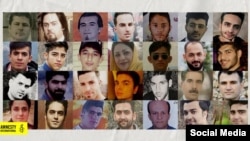Two weeks after the start of anti-government protests that rocked Iran following a sudden gas price hike on November 15, the death toll of protesters is still on the rise.
Many more are reported killed than initially thought because the government imposed a news blackout for 10 days and reports of their deaths are surfacing after internet connectivity has been partially restored during the past few days.
Human rights watchdog Amnesty International has updated the number of confirmed deaths, putting the number at 161 on November 29. However, there are estimates significantly higher than this number, but this is what Amnesty could verify based on reports, while media in Iran are under severe restrictions.
Meanwhile, Kalameh news website maintained by supporters of former Prime Minister and Presidential candidate Mir Hossein Mousavi reported on Thursday November 28 that at least 366 including a nine-year-old child have been shot to death by security forces during the past two weeks.
Ardeshir Amir Arjmand, one of the managers of Kalameh, told Radio Farda that the figure comes from "reliable sources" inside Iran.
Amir Arjmand told Radio Farda that 43 protesters have been killed in Shahryar, southwest of Tehran. Other sources have also said that casualty toll has been high in areas near the capital such as Malard, Eslamshahr and Qaleh Hassan Khan.
Elsewhere, Amir Arjmand said that the Iranian government has mistaken security with ruthless use of force. He added that the government used violence against protesters from the start of the protests.
Some Iranian officials have said that up to 7,000 people have been arrested during and after the protests. Meanwhile, media reports indicate that the government has started a new wave of arrests from among students, workers and others since Wednesday.
Security forces have said that they have arrested at least 50 individuals in Tehran, Shiraz and Isfahan. In another development, the West Tehran Police Chief has said that the police is still working on intelligence to identify the main perpetrators of the protests.
Other police officials including the Fars Province Police Chief have claimed that some of those arrested "confessed." The news of "confessions" has given rise to concerns as Iranian security forces are known for using torture and other tactics to exact forced confessions to incriminate inmates and prove Iranian leaders' conspiracy theories about the involvement of foreigner powers in the unrest.
Statements of new arrests by officials include some of those conspiracy theories. Iranian Intelligence Ministry's Counter-Espionage Chief said on Wednesday that his officers have arrested 8 individuals he claimed have been sending reports and images of the protests to a U.S. spy agency.
The official, however, characterized the detainees as citizen-journalists.
Subsequently, some Iranians on social media reported the arresting of several photographers by security officials in various parts of Iran.
Numerous videos showing Iranian security forces and Basij militia shooting directly at protesters leaked to social media and foreign based satellite TV channels before and after the prolonged internet blackout imposed by the government.
The videos attracted international condemnation of Iranian authorities violent treatment of the protesters and caused further embarrassment to the regime.
In the meantime, friends and family members of those killed during the protests have spoken to foreign based media including Radio Farda, explaining how their loved ones were shot at point blank during peaceful protests.
Some of those killed were too young. Several tweets shed light on the death of a 14-year-old girl.
The father of Pouya Bakhtiari bravely presented the account of how his young son, an electrical engineer who loved poetry, was killed by security forces.
Meanwhile, several family members have told the media or wrote on social media that security forces demanded money before handing over the body of their loved ones for burial. Government officials have denied reports about demanding money.
But there is little credibility left for officials. Social media posts are full of recriminations and condemnations of the government. There is a general consensus that violence used in this round of protests by security forces surpassed anything that had happened before, including in the last eight years of the monarchy when according to one estimate 341 militants, almost all Communist or Islamist armed guerrillas were killed between 1970-78.






